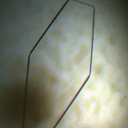About
21
Publications
2,010
Reads
How we measure 'reads'
A 'read' is counted each time someone views a publication summary (such as the title, abstract, and list of authors), clicks on a figure, or views or downloads the full-text. Learn more
149
Citations
Introduction
Wu Qunfeng currently works at the Department of Microbiology and Parasitology, Fudan University. Wu does research in Pathology, Molecular Biology and Immunology. Their most recent publication is 'Genetic diversity and selection of three nuclear genes in Schistosoma japonicum populations'.
Publications
Publications (21)



- [...]

Background
Ticks are blood-feeding significant arthropods that can harbour various microorganisms, including pathogens that pose health risks to humans and animals. Tick-symbiont microorganisms are believed to influence tick development, but the intricate interactions between these microbes and the relationships between different tick-borne microor...
Immunofluorescence assay is one of methods to understand the spatial biology by visualizing localization of biomolecules in cells and tissues. Autofluorescence, as a common phenomenon in organisms, is a background signal interfering the immunolocalization assay of schistosome biomolecules, and may lead to misinterpretation of the biomolecular funct...
Soluble inorganic pyrophosphatases (PPases) are essential for facilitating the growth and development of organisms, making them attractive functional proteins. To provide insight into the molecular basis of PPases in Schistosoma japonicum (SjPPase), we expressed the recombinant SjPPase, analyzed the hydrolysis mechanism of inorganic pyrophosphate (...
Background
Immunofluorescence assay is one of methods to understand the spatial biology by visualizing localization of biomolecules in cells and tissues. Autofluorescence, as a common phenomenon in organisms, is a background signal interfering the immunolocalization assay of schistosome biomolecules, and may lead to misinterpretation of the biomole...
Schistosoma japonicum infection showed protective effects against allergic airway inflammation (AAI). However, controversial findings exist especially regarding the timing of the helminth infection and the underlying mechanisms. Most previous studies focused on understanding the preventive effect of S. japonicum infection on asthma (infection befor...
Oculopharyngodistal myopathy is a late-onset degenerative muscle disorder characterized by ptosis and weakness of the facial, pharyngeal, and distal limb muscles. A recent report suggested a non-coding trinucleotide repeat expansion in LRP12 to be associated with the disease. Here we report a genetic study in a Chinese cohort of 41 patients with th...
Background:
Schistosoma japonicum is a parasitic flatworm that causes human schistosomiasis, which is a significant cause of morbidity in China and the Philippines. A single draft genome was available for S. japonicum, yet this assembly is very fragmented and only covers 90% of the genome, which make it difficult to be applied as a reference in fu...
Background:
Babesiosis is caused by the invasion of erythrocytes by parasites of the Babesia spp. Babesia microti is one of the primary causative agents of human babesiosis. To better understand the status of the disease, discovering key biomarkers of the different infection stages is crucial.
Results:
This study investigated B. microti infectio...
Background
The blood fluke, Schistosoma japonicum still causes severe disease in China, the Philippines and Indonesia. Although there have been some studies the molecular epidemiology of this persistent and harmful parasite, few have explored the possibility and implications of selection in S. japonicum populations. Methods
We analyzed diversity an...
Schistosoma japonicum, a human blood fluke, causes a parasitic disease affecting millions of people in Asia. Thioredoxin-glutathione system of S. japonicum plays a critical role in maintaining the redox balance in parasite, which is a potential target for development of novel antischistosomal agents. Here we cloned the gene of S. japonicum thioredo...
Thioredoxin glutathione reductase from Schistosoma japonicum (SjTGR), a multifunctional enzyme, plays a vital role in antioxidant pathways and is considered to be a potential drug target for the development of antischistosomal chemotherapy. In this study, two constructs of a truncated form of SjTGR without the last two residues (Sec597-Gly598) were...

















































